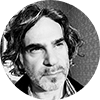I returned to my office after an extended business trip and was prepared to greet the foot-high stack of medical journals that would occupy my attention for the next week. However, the stack of medical and pharmaceutical trade journals that normally would have obscured me from view as I sat behind my desk was barely noticeable. Had our administrator forgotten to circulate the journals to me? No, when I looked further, it became obvious that all the journals were significantly thinner. Well, it was the beginning of summer and perhaps it was a strategic decision in this tight economy to lower the page count and reduce advertising during the summer months when subscribers are on vacation. But no, as each subsequent month brought its required reading material, I continued to observe that each journal was getting thinner and thinner. In fact, some of the trade journals became so thin, they looked like more like brochures than tabloids.
So my question is, “Is the printed page dead or dying?” We certainly have the need, and, in fact, increasing demand for information from publications. How are we getting this information? Are we all going online to retrieve the information we want? And is it available online? Where are the ads?
Certainly the recent trend of exclusively online journals and open access articles has impacted medical publishing. Online journals have challenged the publishing industry, forcing many journals that were print-only to offer their content online as well to be competitive. If you don’t have a subscription and access to the journal, you can usually pay for a download of the article, again minimizing the need to have a printed journal subscription. A significant number of journals provide free access to many, if not all, of the articles through author-paid fees or decision of the publisher to provide open access. In keeping with our immediate need to know, many journals provide “provisional” pre-publication downloads, so articles can be sourced even before they are officially “published,” again reducing the need to read the printed journal.
This shift affects advertisers and publishers, for sure, but it has a broader reach. Many associations include with their membership a subscription to their respective journal and believe that this offering is the primary reason for membership. If they are forced to put the journal online and provide open access to be competitive, what happens to the membership of the association? Can they bring value to their members beyond the publication? Many associations are re-thinking their business model in light of this shift.
So the questions remain: Is it necessary to maintain subscriptions to specific journals? Will we need libraries to house periodicals? In the future will we download everything to a PDA or a Kindle? If so, where will advertising go? Will there be more banner ads and fewer print ads? Will the highly regarded scientific journals that now publish without advertising succumb to pop-up, Flash, and Google AdWords? Are we seeing the end of the printed page as we know it?
RELATED TOPICS

Ken is a great deal more than just the president of a medical communications company. He is something of a hybrid. He’s part marketing manager, part creative director, and part copywriter. To the chagrin of his peers—but to the delight of his clients—Ken is a consummate perfectionist. As a former creative director for a high-end consumer agency, he challenged his creative teams to go beyond the mundane to produce work with real creative impact, something he’s just as fervent about today. From producing and directing TV commercials, to launching DTC and Rx-to-OTC switches, Ken brings his clients a world of experience in OTC pharmaceuticals as well as business, lifestyle, and high-end consumer products and services. Whether huddled with clients behind a mirror in a market research center in Houston, facilitating a strategic workshop in Madrid, or developing a global campaign either in the New Jersey or California office, Ken is always fully engaged, bringing “bestness” to all areas of his hectic but full life.
